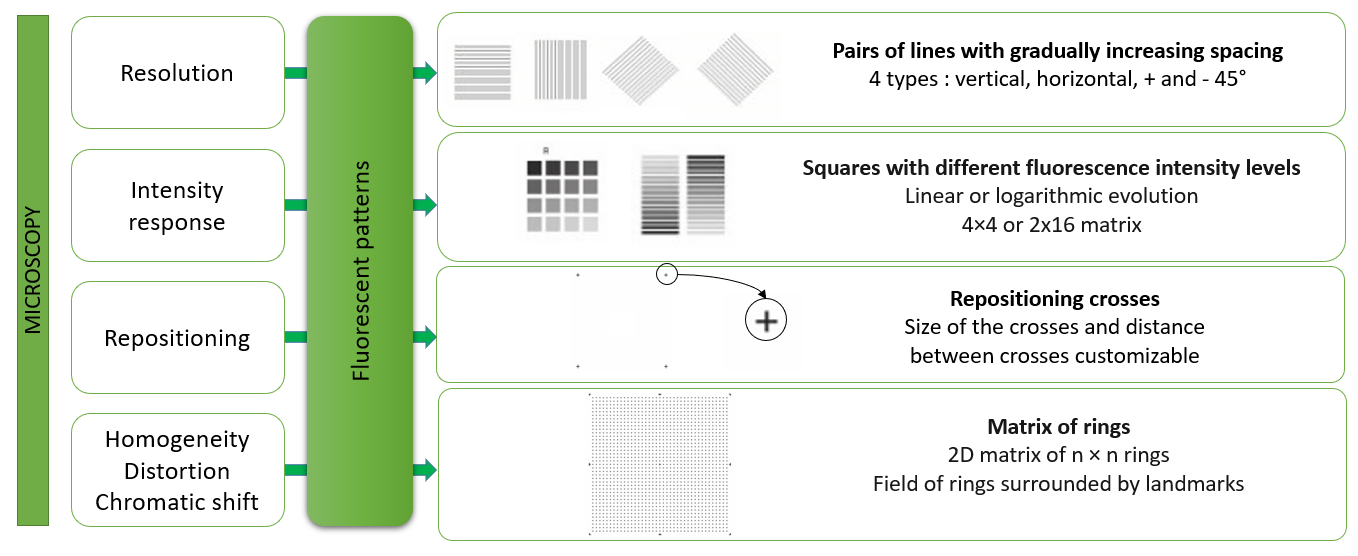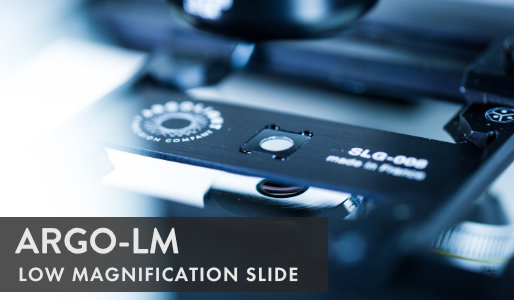Custom slide
Design your own toolWhat about custom products made of AG03?
The following information is about custom products made of Ag02, our previous glass generation. This page will be updated with AG03 specifications as soon as AG03 is available for custom products.
What is Argolight’s elementary point?
Actually our technology induces rings, not points.
The elementary structure, i.e. the fluorescent element at the root of any pattern, is an empty cylinder whose dimensions can be adjusted: the length (FWHM) can be either 0.7 or 8 µm, the diameter (FWHM) either 0.7 or 1.8 µm, and the wall thickness (FWHM) either 110 or 550 nm. The section of this cylinder is a ring with the corresponding dimensions.
From this elementary structure, any 3D fluorescent pattern can be painted, from sub-micrometer to centimeter scales. Additionally linear, circular or more complex trajectories at different depths can be painted, with different fluorescent intensity levels.


Where are these fluorescents patterns?
Our fluorescent patterns are induced under the surface of a home-designed glass.
As we wanted to simulate the presence of a coverslip (to mimic a classic sample slide), our technology is designed to induce our patterns under the surface at 170 µm. The refractive index is specific: 1.52
These parameters allow optimal working conditions to check the performances of lens objectives as they are designed to allow focusing through a coverslip.
For a specific demand we are able to induce patterns without significant aberrations:
- HM-like (0.7 µm * 0.7 µm * 0.7 µm): from 170 µm to 240 µm below the top surface
- LM-like (2 µm * 2 µm * 8 µm): from 10 µm to 500 µm below the top surface
- SIM-like (0.7 µm * 0.7 µm * 0.7 µm): from 170 µm to 240 µm below the top surface
Get quality and performance assessment solutions
Contact your local product specialist or someone from Argolight for more information.
What kind of fluorescent pattern can you induce?
Additionally linear, circular or more complex trajectories at different depths can be painted, with different fluorescent intensity levels.
The patterns are excitable from 325 to 650 nm and the emission is a continuum ranging from slightly above the excitation wavelength up to 800 nm. The lifetime of the fluorescence is within the nanosecond range.
How do you define prices?
Prices are defined based on the number of points and on the surface of the pattern.
- Largest dimensions: 1000 µm x 1000 µm
- Surface of the pattern n times larger = n x n more time to produce
- Closest distance between two lines: 30 nm





